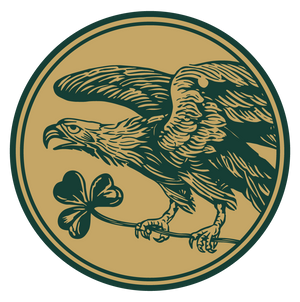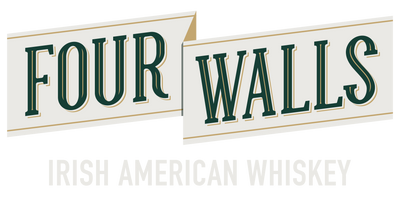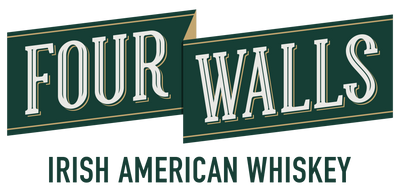The Legend that was: Schaller’s Original Pump

April 30th, 2017 was a sad day for me. It wasn’t the tornados and flooding in the Midwest (though that was definitely tragic). Nor was it the news that Swiss Mountaineer Ueli Steck plummeted to his death while attempting to climb a mountain in the Himalayas (also tragic, but solidly reinforcing my fear of heights).
No, the reason for my wet Kleenex that day was the news that after 136 years, the legacy that was Schaller’s Original Pump had come to an end. The taps ran dry and the doors were locked. This was a blow for our country. Truly it was. Let me tell you why.
Opened by German immigrant George Schaller in 1881, this little bar on South Halsted in Chicago became an icon, a legend even, and a symbol of neighborliness in a city so often noted as cold, both in climate and personality. The bar’s blue-collar roots were there from the start. Less than a mile from George’s place were the gates to the famous Chicago Stock Yards, and after their shifts, the tired, blood-soaked workers shuffled in for a drink and a cleansing, forgetting the livestock screams and carcasses that had flooded their senses over the last twelve hours.

German immigrants, like George himself, were frequent – at first anyway (Bridgeport, the South Side neighborhood home to the bar, saw different immigrant populations come and go – Irish and German, then Polish, then Mexican). Immigrants and lunch-pail toting men of all kinds – the slaughterhouse workers for sure, but also plumbers, painters, iron-workers – and neighborhood locals. They all called this place home.
Then came prohibition. The Federal Government did its best to put the kibosh on places like Schaller’s, but it just didn’t happen. Like many other red-blooded Americans, George decided the 18th amendment was a stupid idea, and so turned his place into a speakeasy. He pumped beer directly from an adjoining (illegal) brewery (giving the place its name – the “Pump”) and installed peep holes on the doors. Time passed and George died, passing the place on to his son, also named George. George the younger picked up where his dad left off, running the place despite the Volstead Act, and even moving a bookmaker into the back of the building (supposedly).

Then came the politicians. But not just any politicians, the ones that would run the Second City. You see, right across the street was the 11th Ward Democratic Headquarters, which became one of the strongest political machines in the entire city, probably the entire state. In 1933, with the tremendous help of the 11th Ward, Ed Kelly was elected mayor of Chicago. Ed Kelly was from Bridgeport and frequented Schaller’s. After Kelly’s 14 years in office, Martin Kennelly was elected. Kennelly was from Bridgeport and frequented Schaller’s. Eight years later, Richard Daley (the senior) was elected. Daley was from Bridgeport and…you get the idea. For almost a century, Chicago saw its mayors (five to be exact) come from this neighborhood, and Schaller’s became the city’s political center.
And did I mention that Schaller’s was less than a mile from Comiskey Park? This was a frequent stop for White Sox fans going to the game, or leaving the game, or listening to the game when they couldn’t go (Schaller’s didn’t have a TV back in the day). It was such a part of the Sox community that their owner, Bill Veeck, would often pull up a barstool and commiserate about the season, even consoling himself there with a stiff drink after the team’s loss to the Dodgers in the 1959 World Series (why Schaller’s then sponsored a little league team called the Dodgers, we’ll never know). On game night the bar was packed and customers stood shoulder to shoulder, drinking heavily and listening to the play by play (or watching the games in later years). Even up until they closed, Schaller’s let people park in their lot for free on game day in exchange for buying a beer or two before wobbling on to the stadium.
When George Jr. died, his son, Jack Schaller, started running things (George Jr. also had a son named George, but he escaped the bar and went into law and politics instead). Jack had been working at the place since his return from WWII, and so knew it intimately when he took it over in 1978. He knew the people, knew the politicians, knew the entertainment (they had one guy that would come in and play the accordion – he could play anything but rock and roll, I swear to God). Until 2016, Jack lived in an upstairs apartment and tended the bar downstairs. He maintained the old saloon’s generosity and community-mindedness. Eventually, his kids started working the place, and they got to know the locals too.
And really, that’s what set this place apart, what made it so legendary. It wasn’t the historic pedigree, though that’s a nice touch, and it wasn’t the speakeasy bonafides. It also wasn’t the familiarity with the city’s politicians, or the past it shared with the White Sox. It was really the locals.
 The old Schaller's Pump sign, before it came down.
The old Schaller's Pump sign, before it came down.
Despite its many myths and legends, Schaller’s was a neighborhood bar, with neighborhood customers. Generations ate here, drank here, laughed here, cried here, celebrated here, and did all the other thousands of things we humans do in a small bar surrounded by our friends. Schaller’s Pump was their city hall, their 11th Ward headquarters. It’s a shame it’s gone now. In 2017, with really no good explanation, the descendants of the original George Schaller decided 136 years was long enough. There was a farewell party, and then that was that. In a moment, it was over. I guess that’s what happens sometimes.
Schaller’s Original Pump will be replaced, the locals will hopefully find another small saloon to frequent, but the memories and stories that formed at “the Pump” will live on in the people who were lucky enough to pass through its doors. If you’ve got a place like this, a Schaller’s in your neighborhood, spend just a moment to thank whatever it is you worship that it’s still there.
- Tags: Bars Sorry We're Closed



